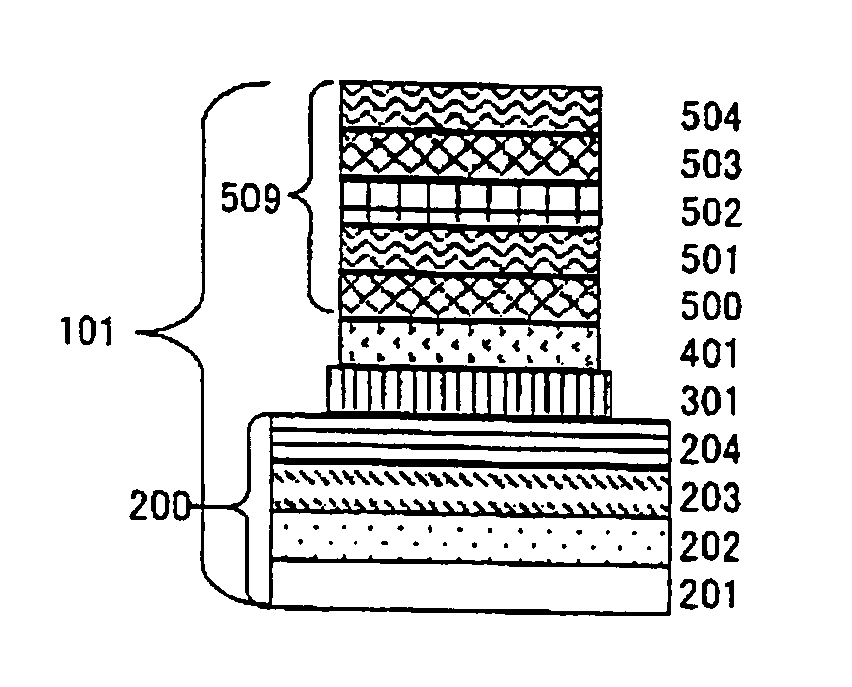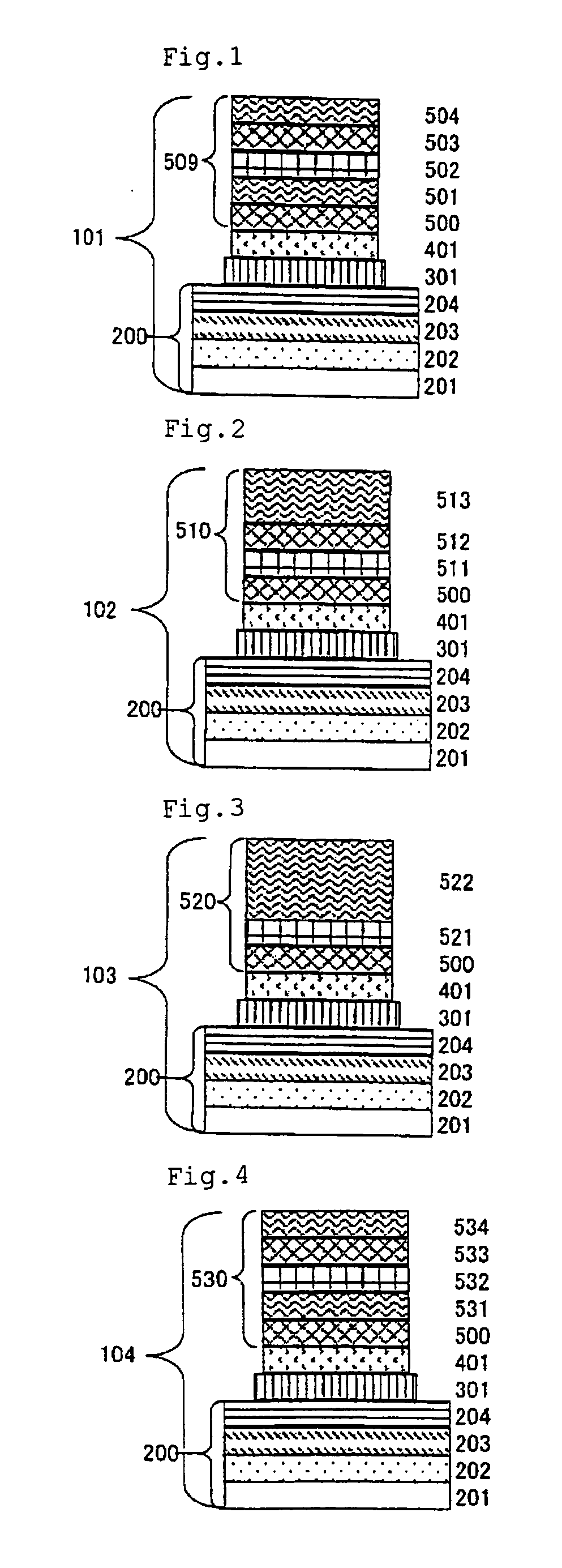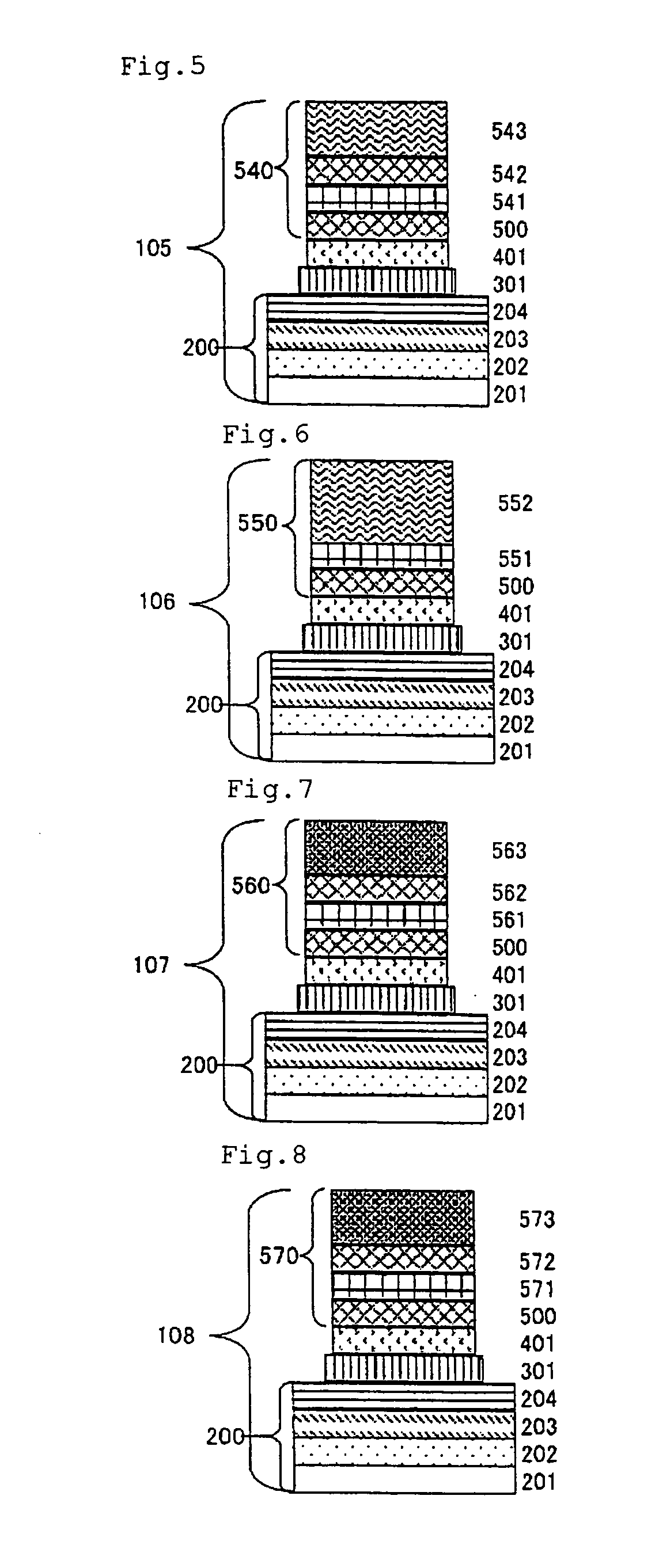Substrate for device bonding, device bonded substrate, and method for producing same
- Summary
- Abstract
- Description
- Claims
- Application Information
AI Technical Summary
Benefits of technology
Problems solved by technology
Method used
Image
Examples
example 1
[0080] A substrate for device bonding having such a structure as is shown in FIG. 1 was prepared in the following manner. FIG. 1 is a sectional view of a typical substrate for device bonding 101 of the present invention. The substrate 200 consists of an aluminum nitride sintered substrate 201, a first undercoating layer 202 containing Ti as a main component, a second undercoating layer 203 containing platinum as a main component and a gold electrode layer 204 laminated in this order. The substrate for device bonding 101 has a structure wherein on a gold electrode layer 204 of the substrate 200, a solder flow-out preventing Pt layer 301, a bonding layer 401 containing Ti as a main component and a solder layer 509 are laminated, wherein the solder layer 509 consists of a first Ag layer 500, a first Au10-Sn layer 501, a Bi layer 502, a second Ag layer 503 and a second Au10-Sn layer 504 laminated in this order.
[0081] First, on a surface of an aluminum nitride sintered substrate (50.8 m...
example 2
[0086] A substrate for device bonding was prepared in the same manner as in Example 1, except that the structure of the solder layer 510 was changed to that wherein on the first Ag layer 500 having a thickness of 1.5 μm, a Bi layer 511 having a thickness of 0.33 μm, a second Ag layer 512 having a thickness of 0.2 μm and a first Au10-Sn layer 513 having a thickness of 3.47 μm were laminated in this order, as shown in FIG. 2. Using the substrate for device bonding, a device bonded substrate (No. 9) was prepared at the same bonding temperature as in Example 1. Similarly, 10 device bonded substrates were prepared, and the surface roughness and the bond strength of the device bonded substrates were measured in the same manner as in Example 1. As a result, Ra was 0.044 μm, Rmax was 0.390 μm, the mean bond strength was 3.1 kgf / mm2, and the modes of peeling were mainly “inside semiconductor device”. Further, substrates for device bonding No. 10 to No. 15 of the invention were prepared by ch...
example 3
[0087] A device bonded substrate (No. 16) was prepared in the same manner as in Example 1, except that the structure of the solder layer 520 was changed to that wherein on the first Ag layer 500 having a thickness of 1.5 μm, a Bi layer 521 having a thickness of 0.33 μm and a first Au10-Sn layer 522 having a thickness of 3.67 μm were laminated in this order, as shown in FIG. 3. Similarly, 10 device bonded substrates were prepared, and the surface roughness and the bond strength of the device bonded substrates were measured in the same manner as in Example 1. As a result, Ra was 0.101 μm, Rmax was 0.807 μm, the mean bond strength was 3.2 kgf / mm2, and the modes of peeling were mainly “inside semiconductor device”. Further, substrates for device bonding No. 17 to No. 19 of the invention were prepared by changing each thickness of the Bi layer and the Au10-Sn layer as shown in Table 1, and then measurement of bond strength was carried out in the same manner as above. The results are set ...
PUM
 Login to View More
Login to View More Abstract
Description
Claims
Application Information
 Login to View More
Login to View More - R&D
- Intellectual Property
- Life Sciences
- Materials
- Tech Scout
- Unparalleled Data Quality
- Higher Quality Content
- 60% Fewer Hallucinations
Browse by: Latest US Patents, China's latest patents, Technical Efficacy Thesaurus, Application Domain, Technology Topic, Popular Technical Reports.
© 2025 PatSnap. All rights reserved.Legal|Privacy policy|Modern Slavery Act Transparency Statement|Sitemap|About US| Contact US: help@patsnap.com



